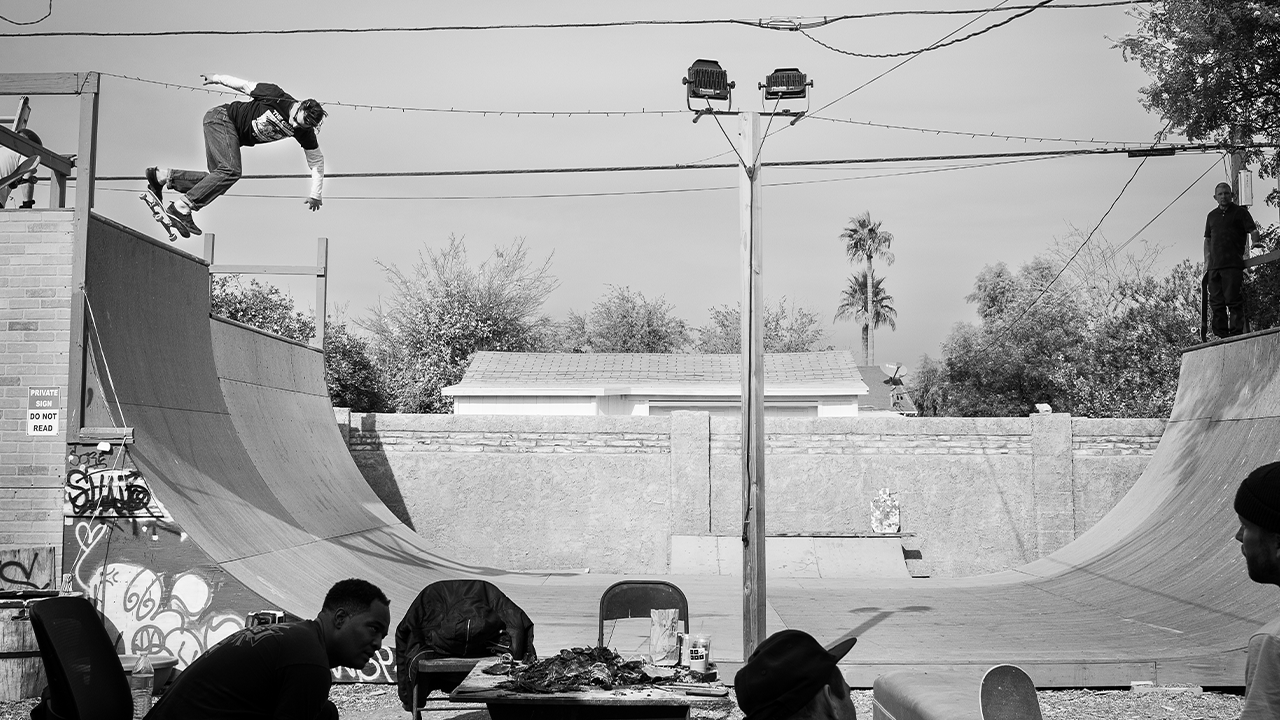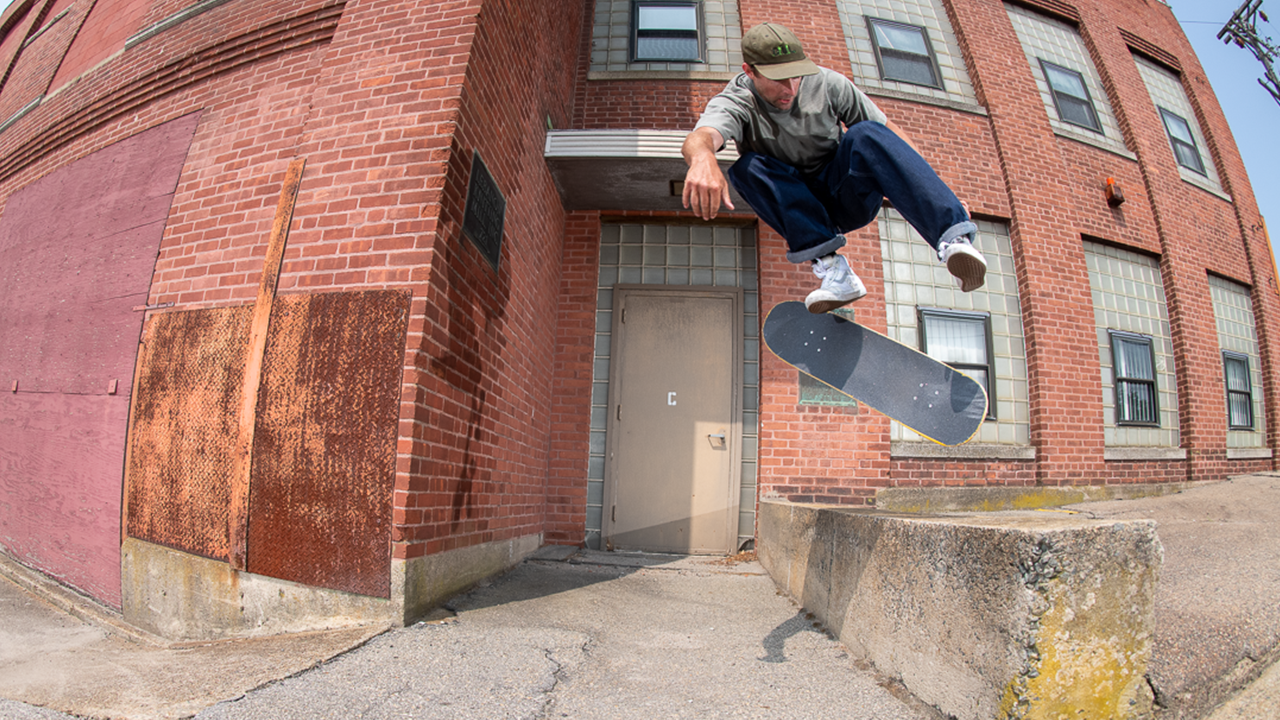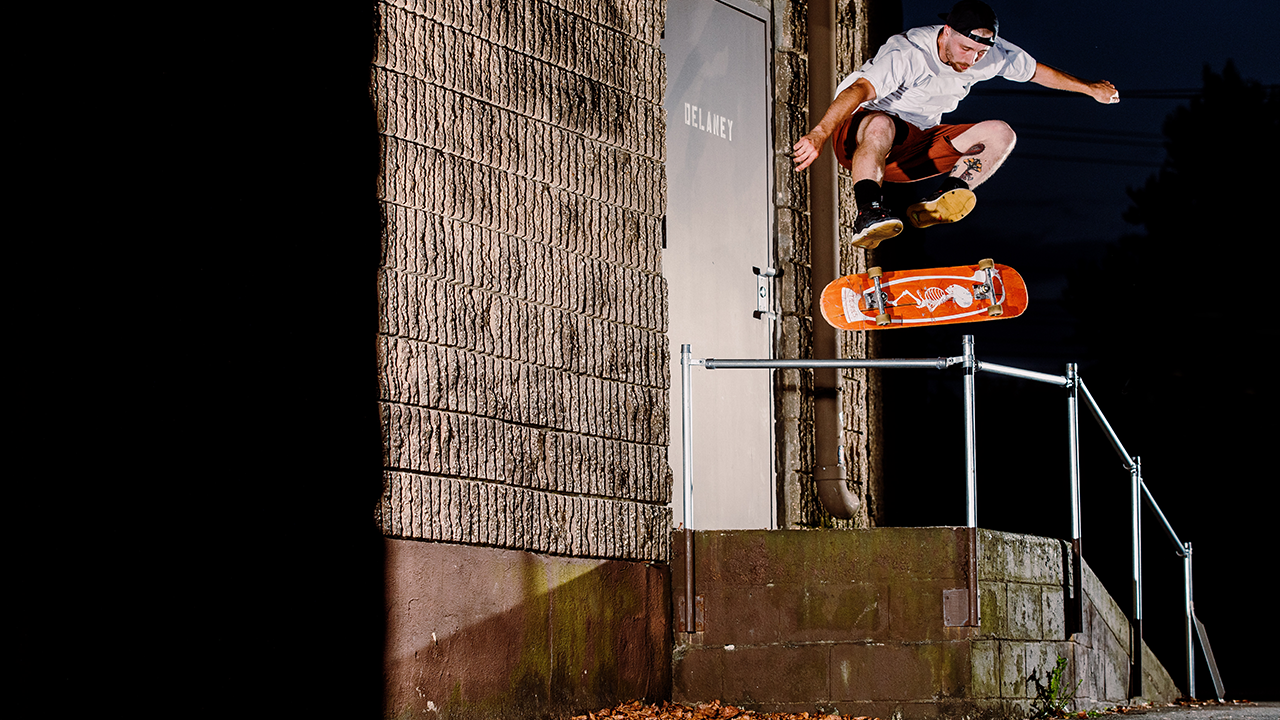For quite some time photographer Peter Mercell and filmer Martin Malo have been traveling around the Balkans, exploring and skating obscure communist-era monuments. After Monuments 1 and 2, this was their third tour. As always, they took a bunch of shredders with them, for M3 namely Štěpán Bareš from the Czech Republic, Igor Hanečák from Slovakia and Przemek Hippler from Poland. Really a multinational trip to a multinational Balkan peninsula and Slav cooperation on point.
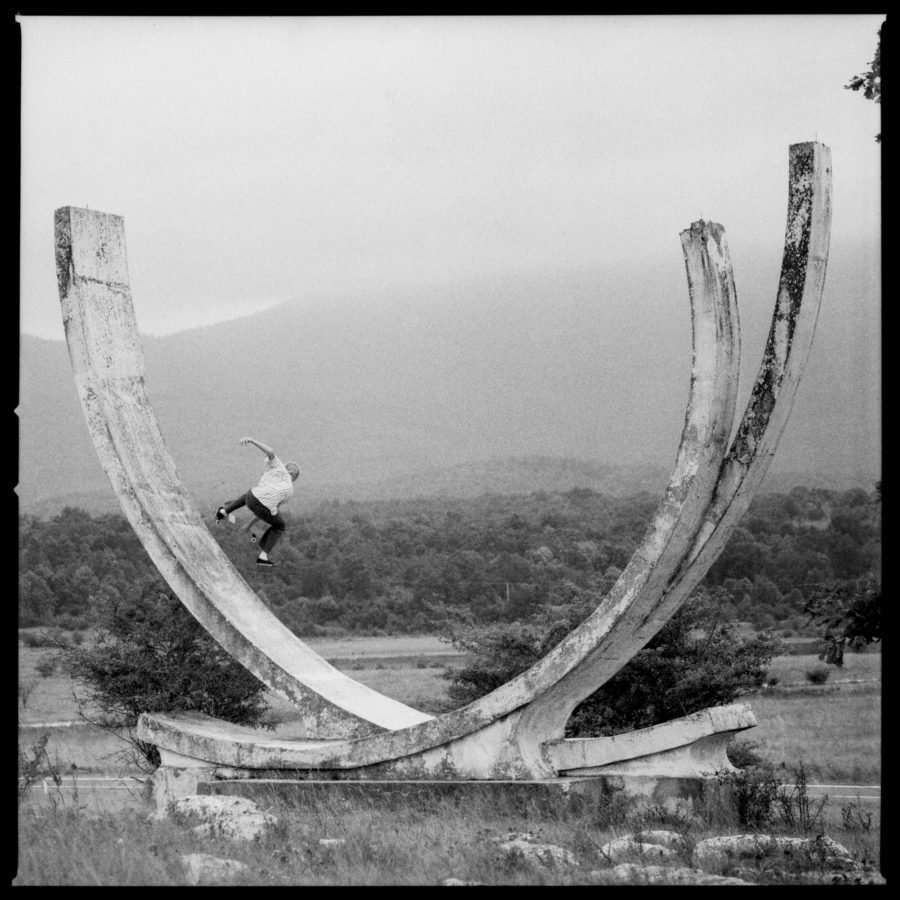
These monuments have been going viral for already some time on the internet. So called “spomenikhs” were built mostly during the ’60s, ’70s, and ’80s to commemorate mostly the victory of Yugoslav soldiers in WWII.
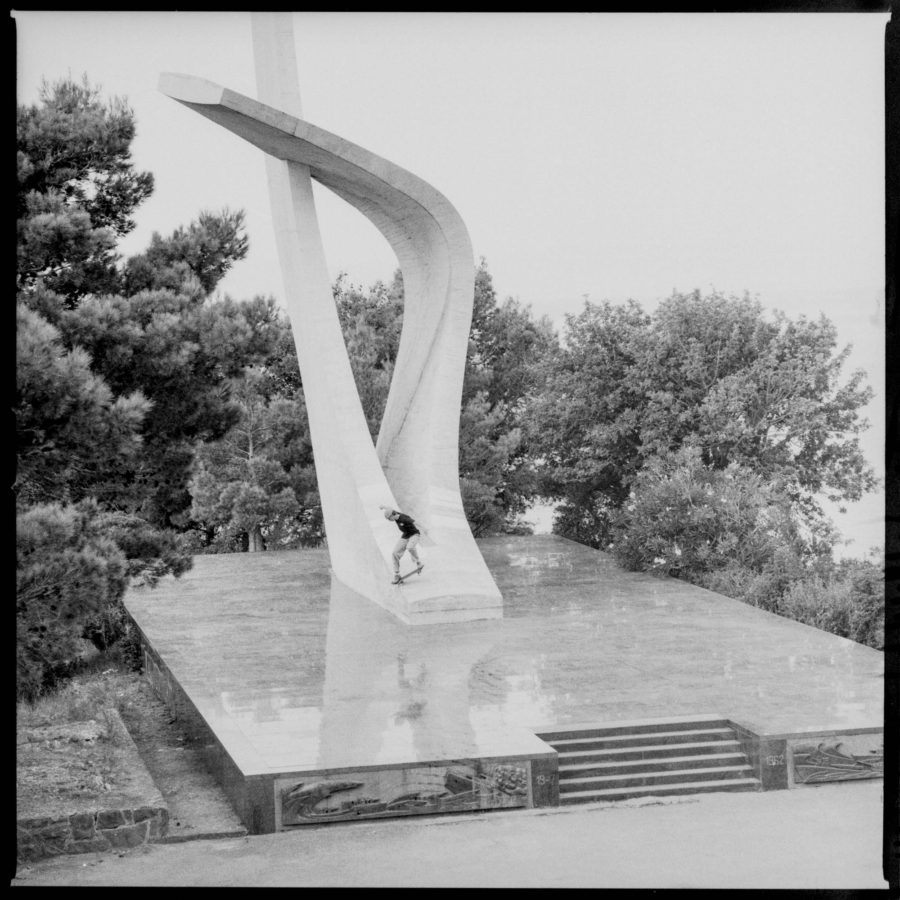
The artistic and abstract architecture was kind of a statement that symbolized the liberalness of the former Yugoslavian state. Luckily their obscure shapes made a couple of them skateable. Peter noticed that and got the idea to capture them in a more non-conventional perspective with the help of skateboarding.

The concept remained the same from M1 and M2 – to travel around spmenikhs and get as much footage, and more importantly photos, as possible. At the beginning of the tour no one knew if it would be possible. Riding on concrete monuments is always an unknown question, a rough surface and not always an ideal roll in and roll out. It is a challenge to every skater.
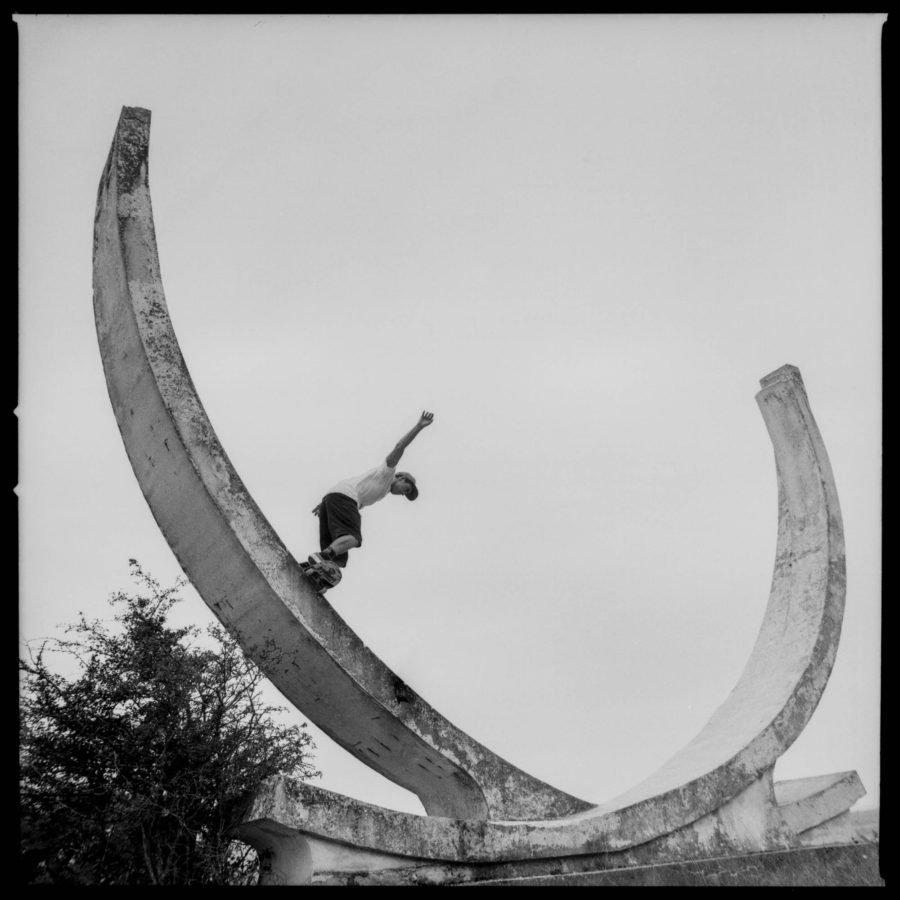
However, this tour was from the technical point of view, a little bit different, and more difficult than the others. This time all of the photos were captured by analog. Peter used the legendary Hasselblad 501cm, a camera which was used by the American astronauts after landing on the moon, and developed the film straight on the spot.
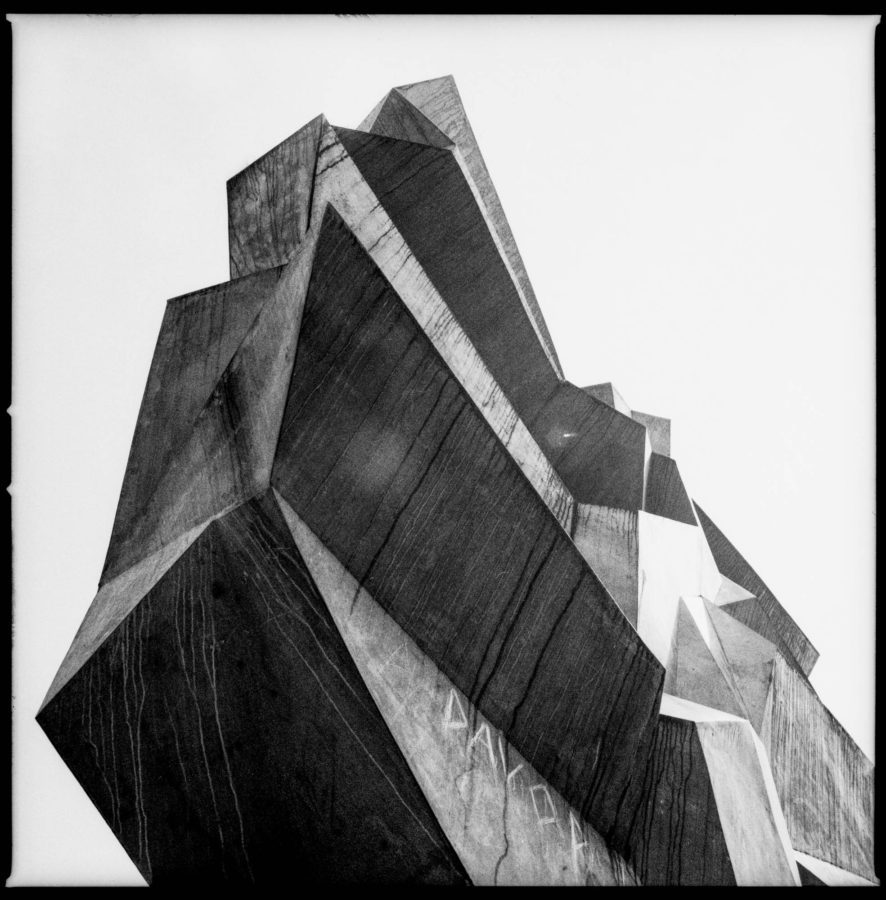
Developing is a complicated process in normal conditions, but developing in the wild is super rare and difficult. Only a few photographers have the lifetime skill to do it. Peter developed on the tour 40 rolls of film. Martin had also slightly non-conventional equipment, he captured videos through his lens which gave the footage a more cinematographic look. Moreover, every member of the crew got his own disposable camera, so the trip could be documented from the perspectives of every member of the team.
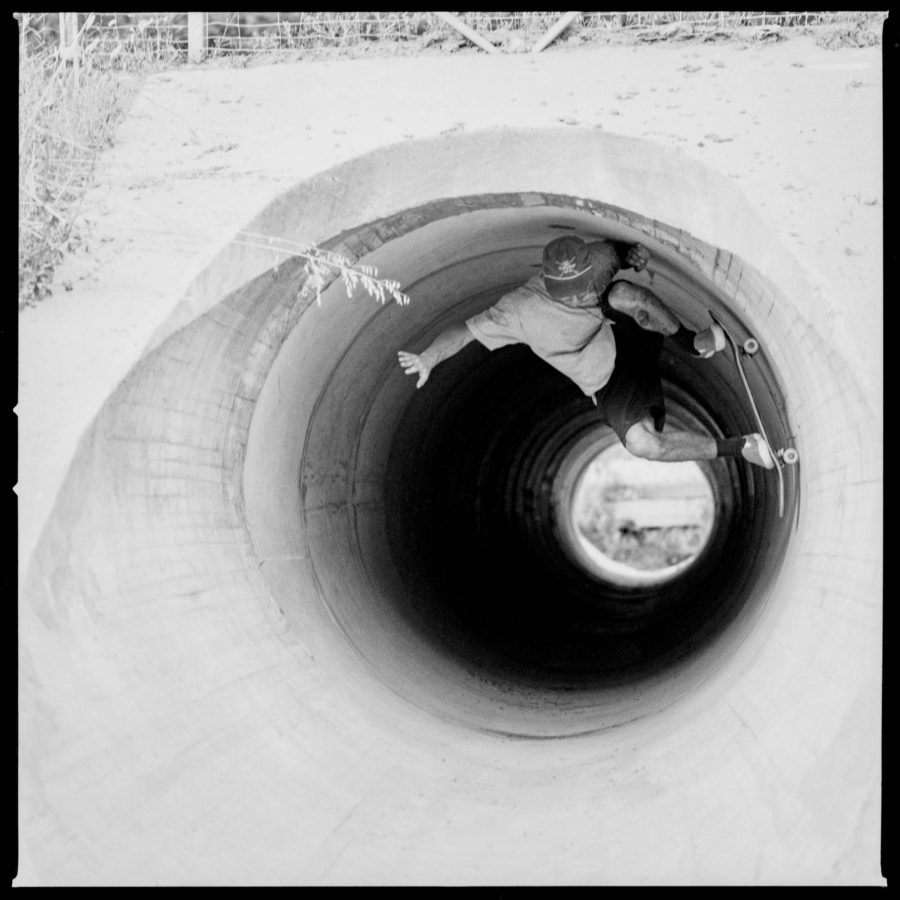
When you go on a trip like this one, it is a lot about traveling. From the huge number of spomenikhs, just a few are skateable and located quite far away from each other, very often in another country. It was almost like the boys visited a new country every day. The crew had gone over 6000km in 10 days, which is totally crazy. Moreover, going to the Balkans by car is an adventure of its own with unpredictable things happening all the time. This tour was no exception, and started off with a deaf man helping the crew change the car bulb. At least the boys got better at sign language.
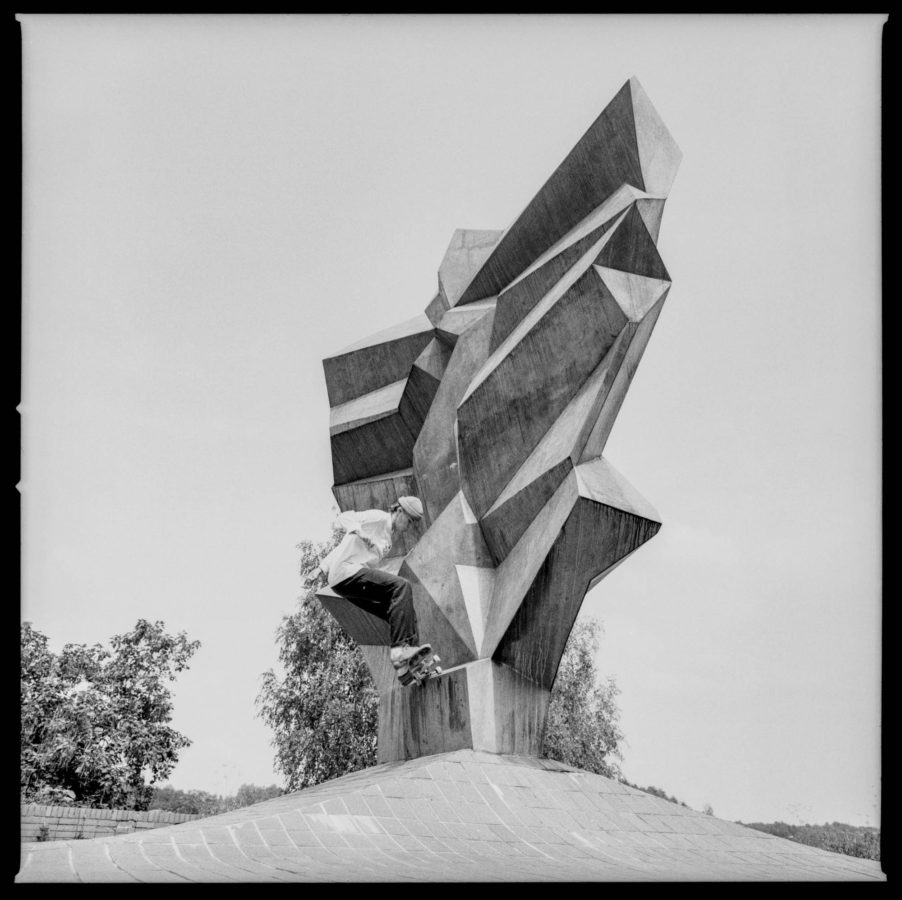
The first spot encountered was a U-shaped monument, Medeno Polje, in Bosnia and Herzegovina. Not an easy one for the beginning to be honest, but it was clear at first glance who was going to skate the spot. Polish transition beast, Przemek, didn’t hesitate, got on it and skated it like a skatepark. Peter did his magic with a camera, developed the film and the crew could continue to Croatia.
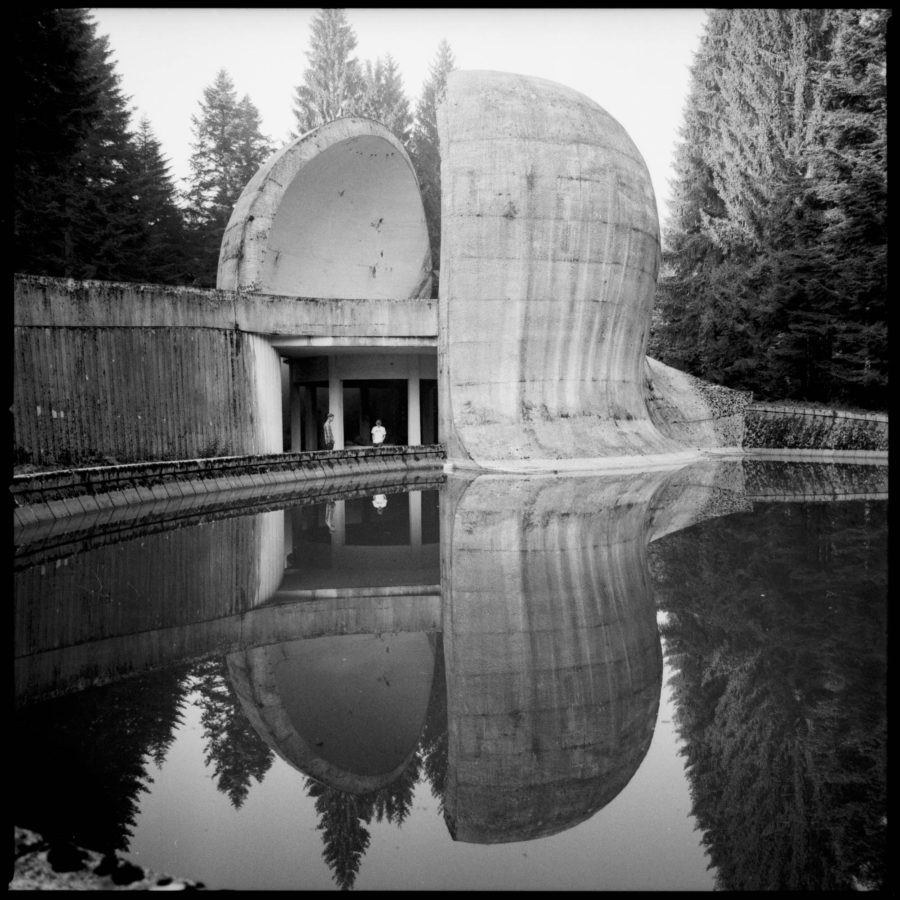
The monument symbolizing seagull wings in Podgora village was a beautiful one. Not just because of the smooth marble ground perfect for skating, but also because of the view on the Adriatic coastline. This was something for Štěpán who had a great session there. The photo of his nose manual is truly fascinating. After that, the boys happily used the opportunity and jumped straight in the water. This day was a good day!
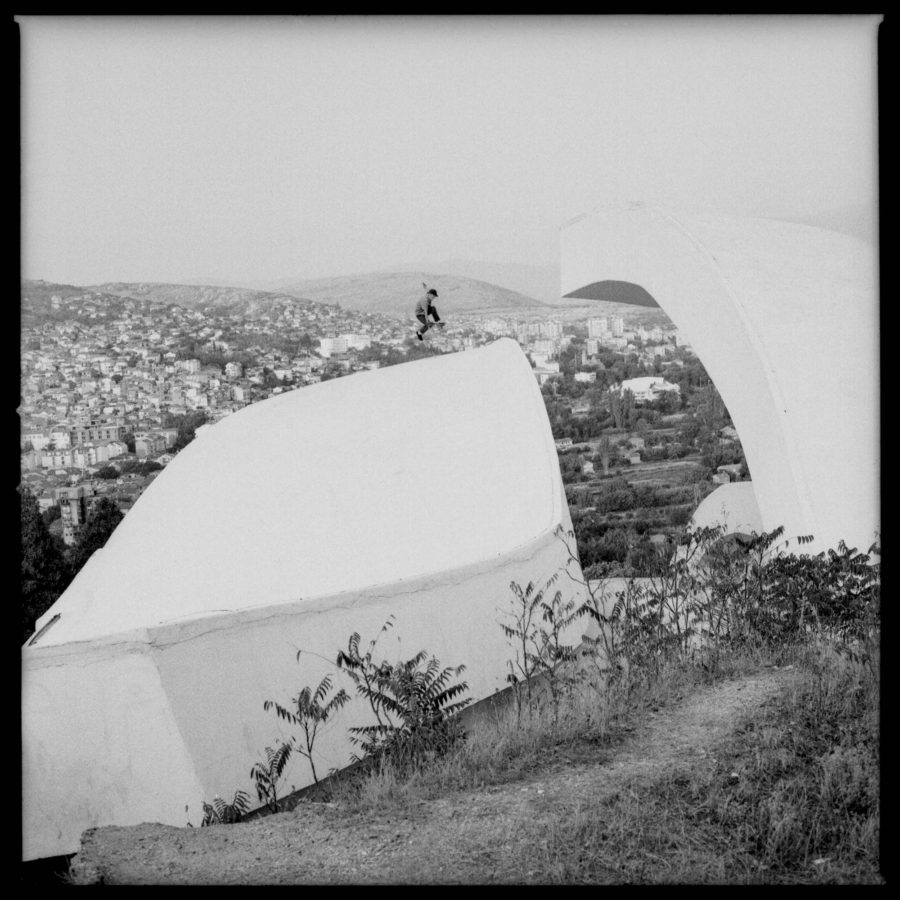
Memorial Ossuary to the heroes of WWII in Macedonia
Sometimes successful and sometimes not, the next day in Montenegro the guys approached three spots, but all of them were not skateable. Of course, that didn’t stop Peter and Martin from being productive and documenting everything. In the evening the crew’s mood got better when experiencing the local cuisine. A “kacmacak” was by far the best one. Mashed potatoes with cheese. If you didn’t finish it, you lose your girlfriend.
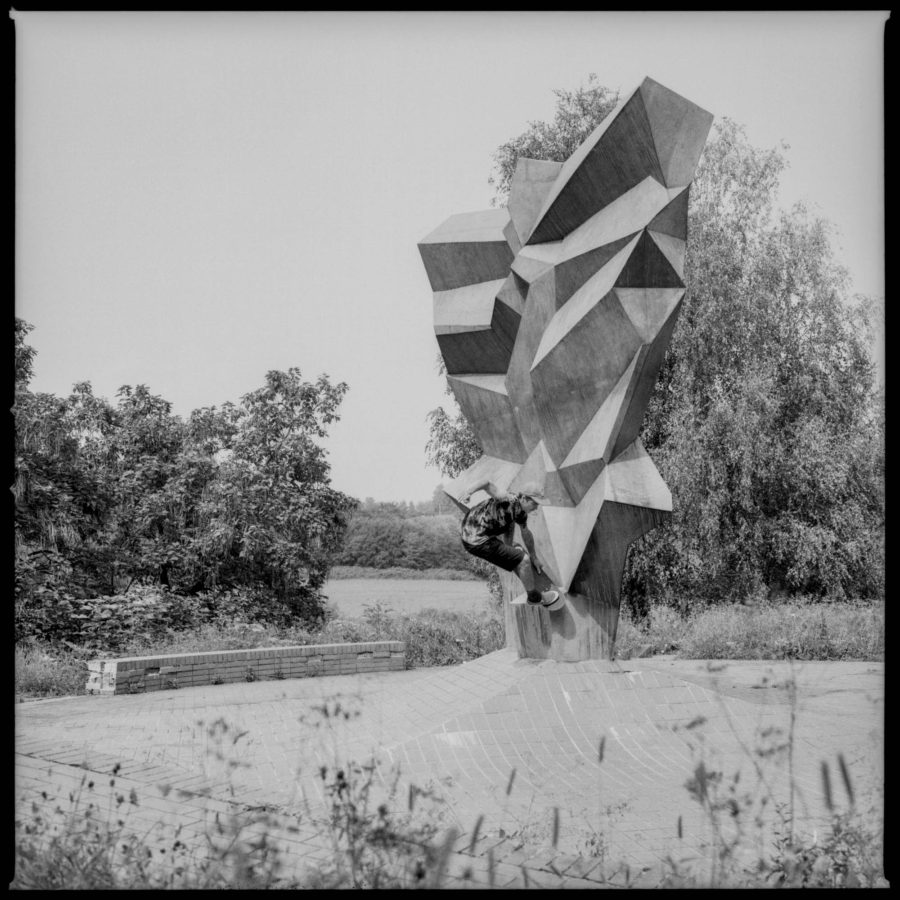
No girlfriends lost, the boys left Montenegro and went through narrow and curvy roads in the Albanian mountains, “a van driver’s dream” according to Peter, and entered Macedonia where they spent the night right by the monument in the town of Veles. Przemek then started the morning off right, climbed on a roof symbolizing a poppy flower, and scored a couple of tricks with a beautiful view of the town behind him.
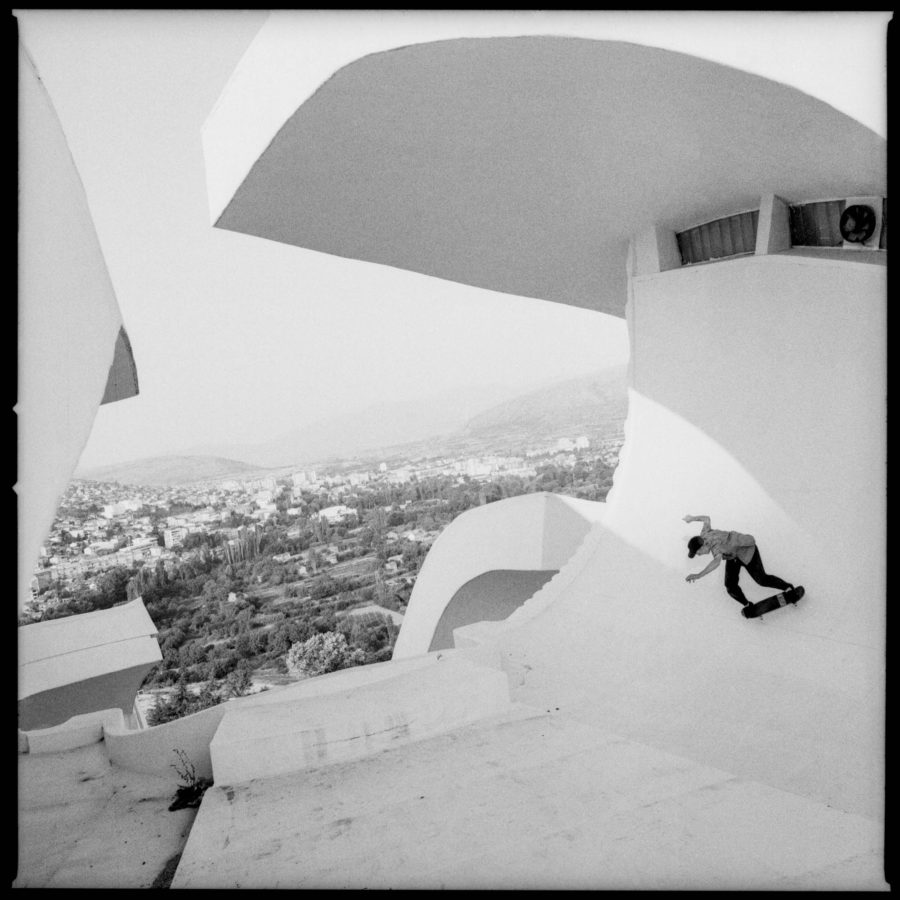
The next spot hid in the Bosnian forest and was called a Grmec, and it wasn’t an easy one. On the photos of the monument, it seemed like a perfect transition with many possibilities for skating. In reality, the whole run-up was underwater. Igor tried to pitch all the water out but it was impossible. He quickly realized that, and with his signature “fuck it, let’s do it anyway” attitude, dropped into the wall and ended up having a bath. Not sure if he really enjoyed it, but it certainly pleased the rest of the crew.

The same goes for the rest of the spots. Near Grmec is a half ball-shaped monument, where Štěpán did quick feet drop-in ollie drop-in there. An aluminum sculpture with brick banks in the Leoglava village then served perfectly as the last spot where the whole crew had a session.

Again, Balkans is a crazy place to go. So many countries with different cultures, but the same goes for all of them. Friendly people, tons of fun, and beautiful nature. In the middle of that you can find those spectacular spomenikhs with absolutely unique atmospheres. The overall idea of project Skate Monuments is to point out places which are hidden from tourists, and connect new-aged modern culture with history and art. It also tries to honor and remind us of these places of forgotten glory and bring it a little closer to the eye of the public in this non-traditional way.

